 |
||||||||||
 |
||||||||||
Public ProgramsThe Fascinating World of Complex SystemsOrganized by ETH Zurich and the New York Academy of Sciences, May 21, 2014
Dr. Dirk Helbing, Chair of Sociology in particular Simulations and Modeling in the Department of Humanities, Social and Political Sciences at ETH Zurich, organized The Fascinating World of Complex Systems and invited Irene Sanders, the Center’s executive director, to make a presentation as part of this event. Ms. Sanders’ presentation provided an overview of the Center’s application of complexity science to foresight development and its work with the U.S. Intelligence Community. This well-attended afternoon event included several short TED-like presentations and lively interaction with the audience. Fred Guterl, executive editor of Scientific American, served as moderator. Montage of entire week’s events, Highlights. Art Meets Science: The Bright BeneathNational Museum of Natural History, December 1, 2011
New York-based Huang is known for his unique installations that merge everyday items and electronic components with air and water to create interactive organic-like environments and sculptures. Through a Smithsonian Artist Research Fellowship, Huang spent two months in 2007 at the NMNH where he was able to interact with scientists and study the museum’s collection of bioluminescent sea creatures. The insights gained through this research resulted in a collection of interactive and colorful bioluminescent-like mechanical deep ocean dwellers. Huang continues to refine the details and mechanics of his collection and the current exhibition is truly a marvel of knowledge and imagination—an integration of art and science. The evening ended with Huang and audience volunteers creating a floating organic-like sculpture in the museum’s rotunda made even more impressive with the Great African Bush Elephant standing above and majestically in the center.
An Afternoon with Michael CrichtonIn collaboration with The Smithsonian Associates - November 6, 2005
Michael Crichton, mega-selling author and creator of the modern techno-thriller, helped millions of readers understand the meaning, usefulness and potential dangers of science and technology at the cutting-edge. At a special event on Sunday afternoon, November 6, 2005, he talked with us about how emerging scientific discoveries had informed his writing—from The Andromeda Strain to Jurassic Park to television’s ER, and his most recent novel, State of Fear —and what he'd learned from his behind-the-scenes research. He also shared his thoughts about the importance of sound science as the under-girding framework for public policy-making in the 21st century. Strategic Thinking in a Complex WorldIn collaboration with The Smithsonian Associates - May, 2004In collaboration with the Resident Associate Program of the Smithsonian Institution, the Center presented Strategic Thinking in a Complex World during the month of May 2004. This groundbreaking one-month course was designed to give participants a working knowledge of complexity science with practical applications to life, work and world events. Working with both scientific and artistic collaborators, this course incorporated a variety of methods and media including—photography, art, music, dance, and architecture. Guest collaborators included: Andy Ilachinski, PhD, physicist/photographer; Symmes Gardner, director, Center for Art and Visual Culture, University of Maryland Baltimore County; and David Rejeski, director, Foresight and Governance Project, Woodrow Wilson International Center for Scholars.
COMPLEXITYIn collaboration with The Federal Reserve Board - September 26—November 28, 2003As its first major public program, the Center was successful in bringing a very unique fine arts exhibition, COMPLEXITY, to Washington, DC. In collaboration with the Fine Arts Program of the Federal Reserve Board, this exhibition on complexity science included works by 23 artists, who used a variety of media to explore commonalities among complex systems across disciplines and topics. It included an early and prescient work by Hans Haacke, Condensation Cube (1963-95), and the work of emerging artist Brian Lytle, who works with chemicals that interact according to their density, creating intricately patterned surfaces. Five video artists were also featured in the exhibition. The exhibition, COMPLEXITY, originated in 2002 at the Samuel Dorsky Museum of Art, SUNY New Paltz, and was curated by Philip Galanter and Ellen K. Levey. MultimediaChaos, Complexity & Public Policy: TV Interview, Woodrow Wilson International Center for Scholars (2009)The Center's executive director, Irene Sanders, was a guest on dialogue, the award-winning radio and TV program of the Woodrow Wilson International Center for Scholars in Washington, DC. In this wide-ranging 30 minute interview, she and program host, John Milewski, covered a range of topics from the economy to cyber security to nuclear proliferation, all designed to demonstrate the usefulness of complexity science to strategic thinking, foresight development and national security. See the interview in the media window below. Traffic Jam: NPR Radio Interview (2003)Traffic got you frustrated? Do you have the feeling that rush hour is really 24/7? Is it possible that chaos theory and complexity science could help traffic engineers and planners in the Baltimore-Washington area find ways to ease your daily commute? In this radio documentary Irene Sanders, executive director of the Center, provides an explanation about how the new science is helping traffic engineers and policy experts find new approaches to transportation management. Produced by Richard Paul, Soundprint, Media Center Inc. and funded by a grant from the National Science Foundation. |
||||||||||
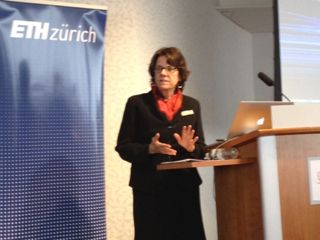 The Fascinating World of Complex Systems, was part of a weeklong series of events celebrating the 100th anniversary of the Dada movement, which was founded in Zurich by refugees from World War I, and exploring the impact of contemporary Swiss visionary movements and scientific discoveries on American culture and the world. Zurich Meets New York: A Festival of Swiss Ingenuity, held in New York City May 16-23, 2014, included more than twenty-five events—music, dance, theater, exhibitions, films, panel discussions and seminars-- held in venues across the city and open to the public. The festival was sponsored by the Consulate General of Switzerland in New York, the City of Zurich, the Swiss Federal Institute of Technology in Zurich (ETH Zurich) and the University of Zurich.
The Fascinating World of Complex Systems, was part of a weeklong series of events celebrating the 100th anniversary of the Dada movement, which was founded in Zurich by refugees from World War I, and exploring the impact of contemporary Swiss visionary movements and scientific discoveries on American culture and the world. Zurich Meets New York: A Festival of Swiss Ingenuity, held in New York City May 16-23, 2014, included more than twenty-five events—music, dance, theater, exhibitions, films, panel discussions and seminars-- held in venues across the city and open to the public. The festival was sponsored by the Consulate General of Switzerland in New York, the City of Zurich, the Swiss Federal Institute of Technology in Zurich (ETH Zurich) and the University of Zurich.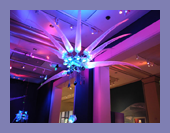
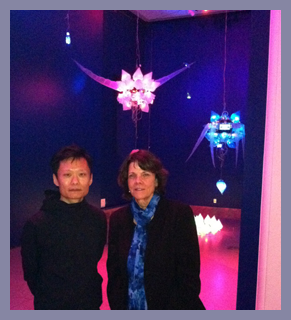 Bioluminescence, the ability of certain organisms to produce light—including some bacteria and fungi, fireflies, glowworms and many types of fish—was the subject of a fascinating and innovative exhibit at the National Museum of Natural History (NMNH) created by artist Shih Chieh Huang
Bioluminescence, the ability of certain organisms to produce light—including some bacteria and fungi, fireflies, glowworms and many types of fish—was the subject of a fascinating and innovative exhibit at the National Museum of Natural History (NMNH) created by artist Shih Chieh Huang 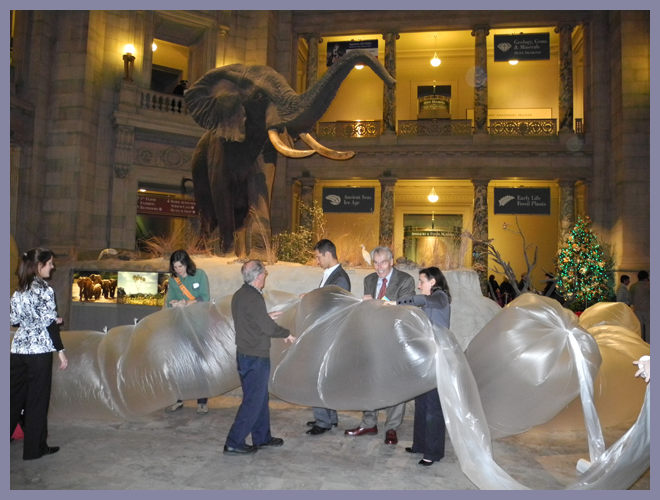
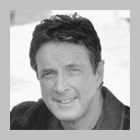 Isn’t it interesting how his novels always seemed to pre-date some real-world scientific discovery, technological development or headline event?
Isn’t it interesting how his novels always seemed to pre-date some real-world scientific discovery, technological development or headline event? 






